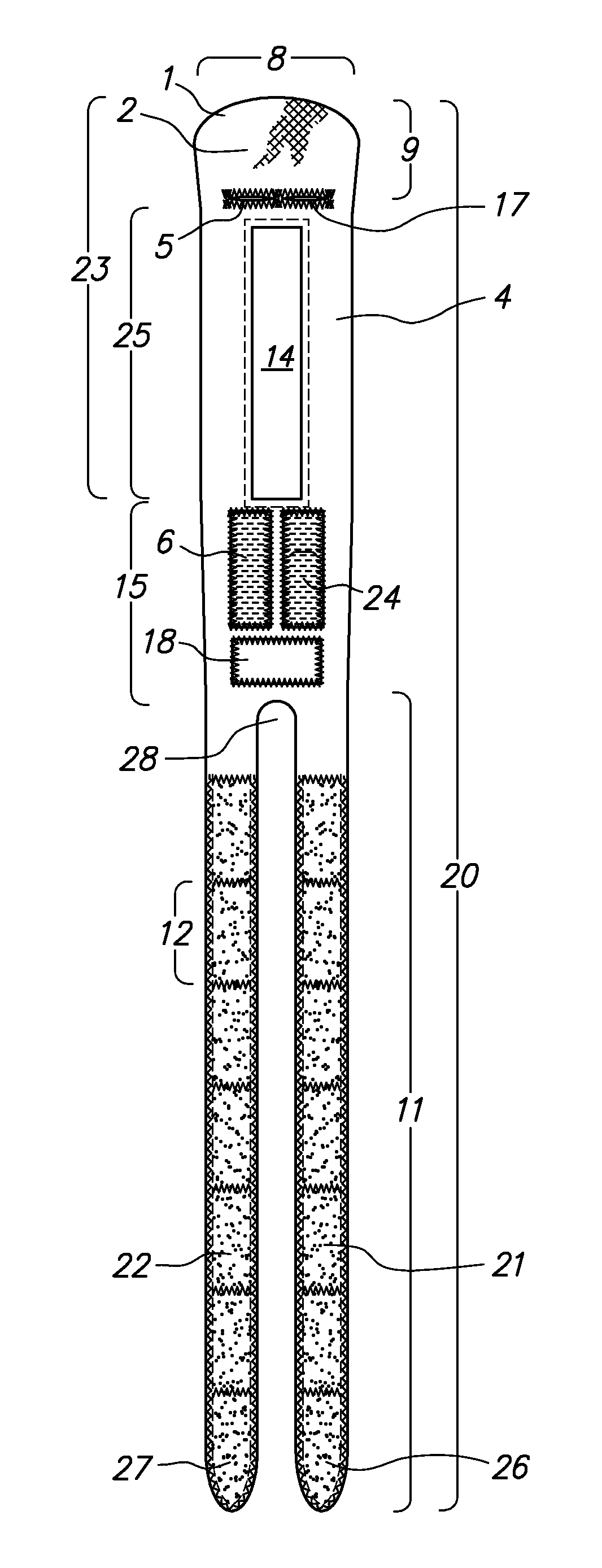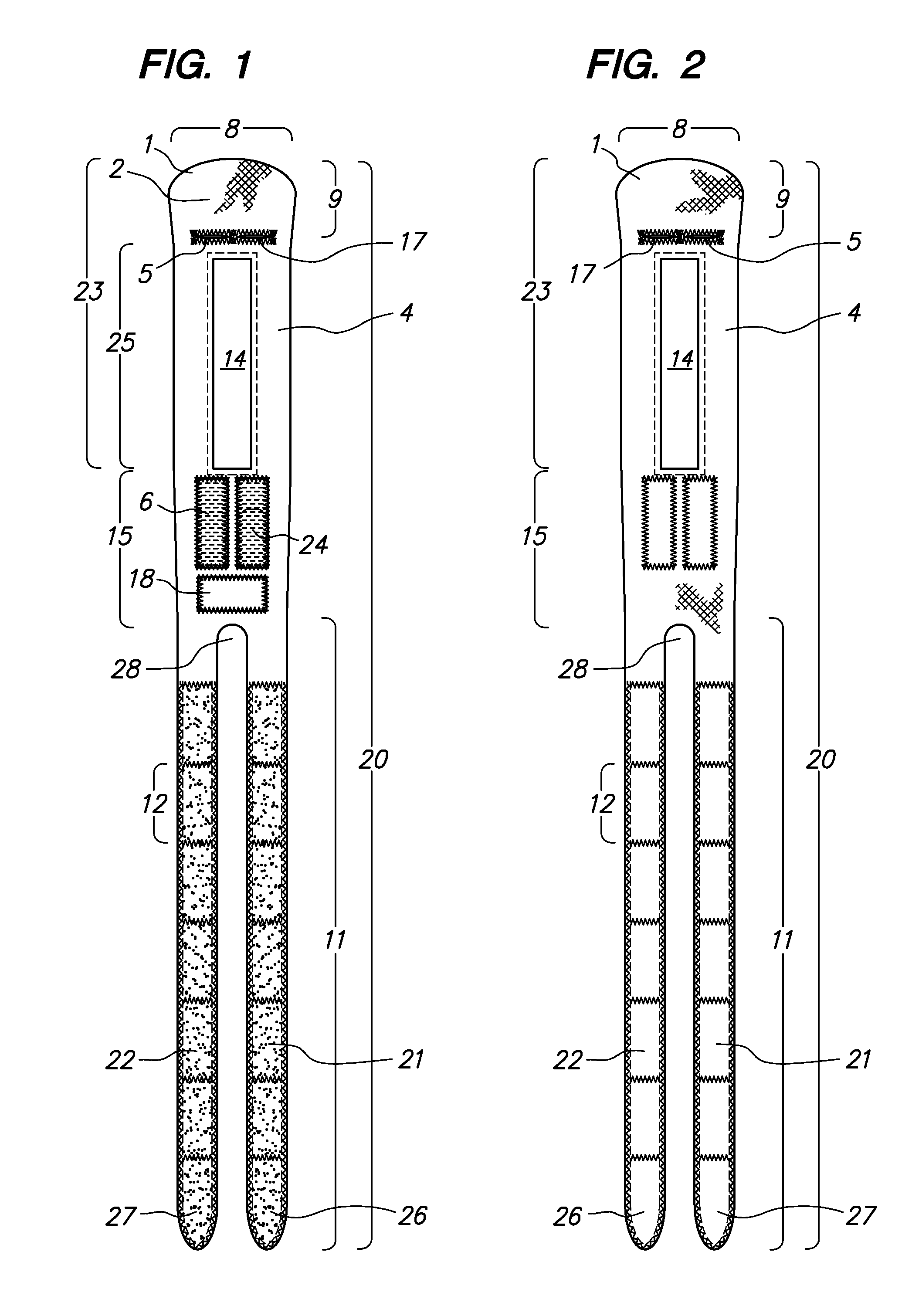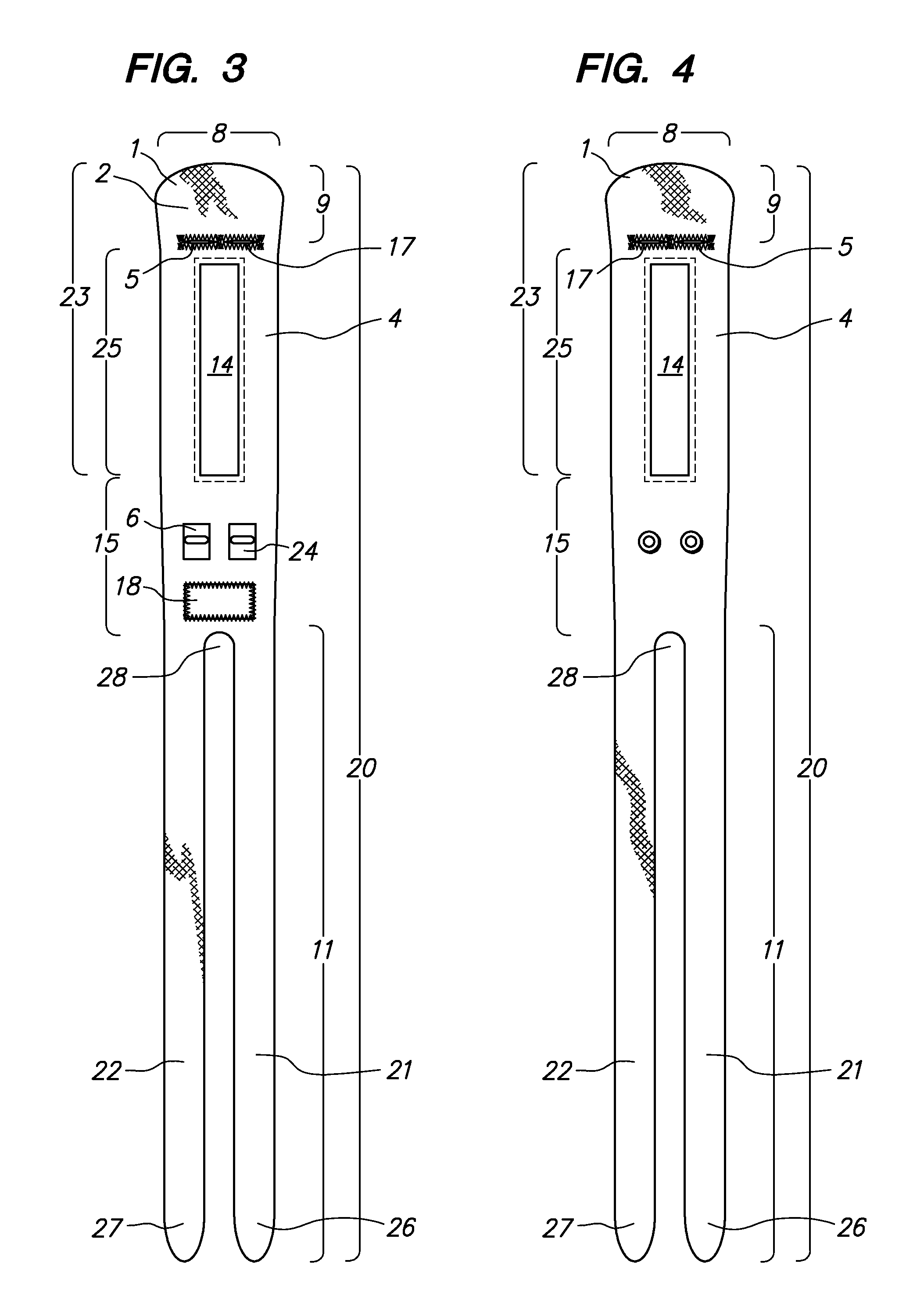DRUJ brace with ulnar styloid accommodation
a wrist brace and styloid technology, applied in the field of orthopaedic wrist braces, can solve the problems of ulnar wrist pain, incorrect compression, and druj ligament stabilization often tear, and achieve the effect of reducing pain, reducing pain, and reducing the compressive force of each strap
- Summary
- Abstract
- Description
- Claims
- Application Information
AI Technical Summary
Benefits of technology
Problems solved by technology
Method used
Image
Examples
Embodiment Construction
[0034]As used herein, “longitudinal” means parallel to the long axis of the forearm, and “lateral” means transverse to the longitudinal axis. With respect to a DRUJ Brace donned on the forearm of a subject, “longitudinal” means along the cylindrical axis of the DRUJ Brace, with the DRUJ Brace circumferentially enveloping the DRUJ area, and “lateral” means parallel to the DRUJ Brace straps as they circumferentially envelope the DRUJ area.
[0035]As shown in FIGS. 1 and 2, a basic embodiment of the DRUJ Brace (20) comprises a single flexible, inelastic sheet (1) adapted to wrap around the DRUJ area of a human subject (“patient”). The sheet (1) comprises a central section (15), a first strap (21) connected to, and disposed laterally on a “strap side” (11) of, the central section (15), a second strap (22) connected to, and disposed on the strap side (11) of, the central section (15) and parallel to first strap (21), a rounded end section (23) connected laterally to the central section (15...
PUM
 Login to View More
Login to View More Abstract
Description
Claims
Application Information
 Login to View More
Login to View More - R&D
- Intellectual Property
- Life Sciences
- Materials
- Tech Scout
- Unparalleled Data Quality
- Higher Quality Content
- 60% Fewer Hallucinations
Browse by: Latest US Patents, China's latest patents, Technical Efficacy Thesaurus, Application Domain, Technology Topic, Popular Technical Reports.
© 2025 PatSnap. All rights reserved.Legal|Privacy policy|Modern Slavery Act Transparency Statement|Sitemap|About US| Contact US: help@patsnap.com



